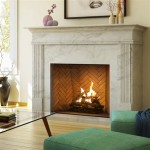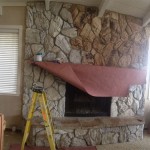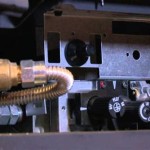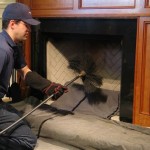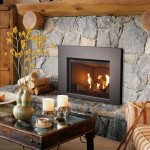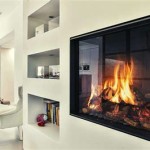Ventless Wall Mount Gas Fireplace: A Guide to Installation, Benefits, and Safety
Ventless wall mount gas fireplaces offer a convenient and aesthetically pleasing heating solution for homeowners. Unlike traditional fireplaces, these units do not require a chimney or venting system, making them suitable for a wider range of homes and installation locations. This article provides a comprehensive overview of ventless wall mount gas fireplaces, covering their installation process, advantages, safety considerations, and key features.
A ventless, also known as a vent-free, wall mount gas fireplace operates by burning natural gas or propane and releasing the heat directly into the room. They are designed to burn fuel very efficiently, and the exhaust gases are released directly into the living space. They are equipped with oxygen depletion sensors (ODS) which shut off the gas supply if the oxygen level in the room drops to an unsafe level.
The ability to be mounted on a wall offers additional space-saving benefits, appealing to those living in smaller homes, apartments, or condos. The visual appeal of a ventless wall mount gas fireplace can significantly enhance a room's ambiance, contributing both warmth and a focal point of design. The selection of models, styles, and finishes offers homeowners the flexibility to match the fireplace with their existing décor.
Installation Considerations for Ventless Wall Mount Gas Fireplaces
The installation of a ventless wall mount gas fireplace involves several steps that should be carefully considered. While some homeowners may choose to perform the installation themselves, it's highly recommended to hire a qualified professional gas fitter or HVAC technician to ensure safety and compliance with local building codes. Correct installation is paramount to the safe and efficient operation of the unit, and it will also ensure that the manufacturer's warranty remains valid.
The first step is to determine the appropriate location for the fireplace. The location should be chosen with both aesthetic appeal and safety in mind. It must adhere to the manufacturer's clearance guidelines, which specify the minimum distance required between the fireplace and combustible materials, such as curtains, furniture, and wood trim. Ignoring these clearance requirements can create a fire hazard.
Next, the wall needs to be prepared for mounting the fireplace. Most wall mount gas fireplaces require secure attachment to wall studs or a solid wall surface. Using a stud finder, locate the studs in the wall where the fireplace will be mounted. The mounting bracket or hardware that comes with the fireplace is then attached securely to the wall studs using appropriate screws and anchors. For walls that do not have suitable stud placement, additional support systems may be needed.
Once the mounting bracket is securely in place, the gas line connection can be established. This is where hiring a qualified gas fitter becomes crucial. A gas line must be run to the fireplace location, and a shut-off valve must be installed for safety. The gas line connection must be leak-tested to ensure there are no gas leaks. This testing typically involves applying a soap solution to the connection points and observing for bubbles. Any gas leaks must be addressed immediately.
After the gas line connection is complete, the ventless wall mount gas fireplace unit can be carefully mounted onto the bracket. Ensure it is securely attached and level. Once the unit is properly mounted, the gas supply can be carefully turned on, and the fireplace can be tested to ensure it is operating correctly.
Finally, adhere to all local regulations regarding the use of ventless fireplaces, including any restrictions on room size or ventilation. In some jurisdictions, ventless fireplaces may be restricted or prohibited due to concerns about indoor air quality.
Advantages of Ventless Wall Mount Gas Fireplaces
Ventless wall mount gas fireplaces offer several distinct advantages over traditional fireplaces. The lack of a chimney or venting system makes them easier and more cost-effective to install. This eliminates the expense of chimney construction or modification, which can be significant. They also offer a high degree of installation flexibility, as they can be installed in almost any room of the house, provided there is a gas line available.
Another significant advantage is their high energy efficiency. Because they do not vent exhaust gases to the outside, virtually all the heat generated by the fireplace is transferred directly into the room. This can result in substantial energy savings, depending on the frequency of use and the size of the room being heated. Some ventless gas fireplaces are equipped with thermostats and remote controls to further optimize energy usage.
Furthermore, ventless wall mount gas fireplaces are typically easier to operate and maintain than traditional wood-burning fireplaces. There is no need to purchase, store, or chop firewood. Eliminating wood debris reduces the amount of cleanup required. Many ventless gas fireplaces have electronic ignition systems, which makes lighting the fire as simple as pushing a button or flipping a switch. The flame height and heat output can also be easily adjusted using a remote control or control panel.
These units come in a wide variety of styles, from modern and minimalist to traditional and ornate. This design flexibility allows homeowners to select a fireplace that complements their existing décor. Many models also come with decorative features, such as artificial logs, glass beads, or river rocks, which add to the visual appeal of the fireplace.
Finally, ventless gas fireplaces offer a clean-burning and environmentally friendly heating option compared to wood-burning fireplaces. They produce significantly fewer emissions, reducing the impact on air quality. While they do produce some carbon dioxide, the amount is typically much lower than that produced by burning wood.
Safety Precautions and Maintenance for Ventless Wall Mount Gas Fireplaces
Safety is paramount when operating a ventless wall mount gas fireplace. While these units are designed to be safe, it is essential to follow all safety precautions and perform regular maintenance to ensure proper operation and prevent potential hazards. The built-in oxygen depletion sensor (ODS) is a critical safety feature. This device monitors the oxygen level in the room and shuts off the gas supply if the oxygen level drops to an unsafe level. It is crucial to ensure that the ODS is functioning correctly and is not tampered with.
Proper ventilation is essential for safe operation. While these fireplaces are designed to operate without a chimney, it is still important to ensure adequate ventilation in the room. This helps to prevent the buildup of carbon monoxide and other combustion byproducts. The manufacturer's instructions will typically specify the minimum room size required for the fireplace and may recommend leaving a door or window slightly open while it is operating.
Carbon monoxide detectors should be installed in the home, ideally near the fireplace, to provide an early warning of carbon monoxide buildup. These detectors should be tested regularly to ensure they are functioning properly. Replace batteries regularly to ensure continuous operation.
Regular maintenance is necessary to ensure that the fireplace continues to operate safely and efficiently. This includes cleaning the burner assembly and removing any dust, debris, or lint that may have accumulated. The burner assembly should be inspected periodically for signs of corrosion or damage. If any problems are detected, the fireplace should be serviced by a qualified technician.
Never use the fireplace to burn anything other than natural gas or propane, as specified by the manufacturer. Burning other materials can produce harmful emissions and damage the fireplace. Avoid placing any combustible materials near the fireplace, and maintain the recommended clearance distance between the fireplace and combustible materials.
Children and pets should be supervised when the fireplace is in operation. The surface of the fireplace can become hot, and children and pets should be kept away to prevent burns. Consider installing a safety screen or barrier to further protect children and pets.
If the fireplace is not being used for an extended period, turn off the gas supply to the fireplace to prevent accidental gas leaks. Schedule an annual inspection by a qualified technician to ensure that the fireplace is operating safely and efficiently. The technician can inspect the gas line, burner assembly, and other components for signs of wear or damage.
By following these safety precautions and performing regular maintenance, homeowners can enjoy the warmth and ambiance of a ventless wall mount gas fireplace for many years to come.

Vent Free Archives SÓlas Contemporary Fireplaces

Plazmafire Vf24 Whvf24 Ambassador Fireplaces

Pin On Supp 5

Napoleon Gas Vent Free Wall Mount Fireplace Whvf31 Direct Fireplaces Hvacdirect Com

Ventless Gas Fireplace Vent Free Modern

Milan 24 Inch Ventless Wall Mounted Bio Ethanol Fireplace Ew

Wall Mounted Gas Fireplace Black Frame Lava Fires

Boulevard Sl Vent Free Linear Fireplace Fine S Gas

Superior 43 Inch Vent Free Linear Gas Fireplace Vrl4543 North Country Fire

Monessen Hearth Artisan Vent Free Gas Fireplace Advanced Chimney Systems
Related Posts

